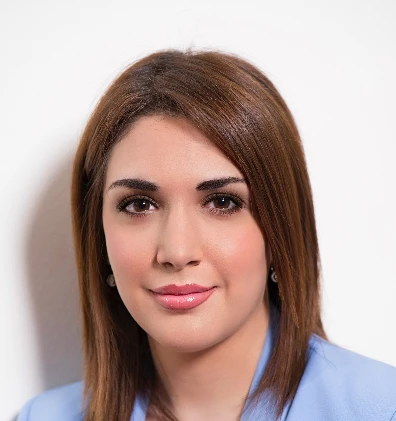184 - Growth Outcomes Following Vertebral Body Sparing Proton CSI for Pediatric Brain Tumors: A Multicenter, Combined Prospective - Retrospective Cohort Study
Presenter(s)

M. Ioakeim-Ioannidou1, B. Chou2, A. Niemierko1, S. Kang1, J. Marinelli1, T. Flood1, D. Giantsoudi1, C. J. Cobos3, D. R. Grosshans4, S. L. McGovern5, M. F. F. McAleer6, K. X. Liu1, T. I. Yock1, K. J. Marcus1, D. A. Haas-Kogan1, S. M. MacDonald7, and I. MacEwan8; 1Department of Radiation Oncology, Mass General Brigham, Harvard Medical School, Boston, MA, 2Department of Radiation Medicine and Applied Sciences, University of California - San Diego, San Diego, California, USA., San Diego, CA, 3Boston Children's Hospital, Boston, MA, United States, 4Division of Radiation Oncology, The University of Texas MD Anderson Cancer Center, Houston, TX, 5Department of Radiation Oncology, The University of Texas MD Anderson Cancer Center, Houston, TX, 6Department of Radiation Oncology, Division of Radiation Oncology, The University of Texas MD Anderson Cancer Center, Houston, TX, 7Southwest Florida Proton Center, Estero, FL, 8Department of Radiation Medicine and Applied Sciences, University of California San Diego, La Jolla, CA
Purpose/Objective(s): Craniospinal irradiation (CSI) is integral to curative treatment for numerous pediatric brain tumors. Proton CSI allows for sparing of structures beyond the target volume. Many radiation oncologists prefer to include the entire vertebral body (VB) and growth plate in the treatment volume for growing children and uniformly inhibit growth rather than risk inducing perturbation of bone growth from radiation dose asymmetry anterior to posterior. Advanced proton radiation delivery techniques, including Proton Beam Scanning (PBS) and improvements in immobilization and setup verification, allow for delivery of proton CSI with substantial VB sparing (VBS).
Materials/Methods: Clinical and treatment characteristics were recorded for 80 children receiving VBS CSI with PBS between August 2014 and December 2021. Twenty patients were treated under a phase I feasibility trial of VBS CSI. Early axial growth outcomes of 76 patients were evaluated by MRI scans and standing height measurements obtained at baseline and then annually. Growth hormone (GH) was also assessed at baseline and in follow-up. Longitudinal data were analyzed using fractional polynomials mixed effect model with age at VBS CSI, follow-up time, and gender as covariates.
Results: Median age of 54 (71%) male and 22 (29%) female patients receiving VBS CSI was 10.3 years (IQR: 6.9 – 13.4). Medulloblastoma was the most common histology (n=62), followed by GCT (n=13), pineoblastoma (n=3), and two other diagnoses. Median CSI dose was 23.4 Gy (IQR: 23.4 – 36). 5 patients received a spine boost. At a median follow-up of 3 years (IQR, 2 – 4.6) since CSI, the overall survival (OS) and progression-free survival (PFS) rate were 92% (95%CI: 82-96%) and 77% (95%CI: 66-85%), respectively. 27 (34%) patients developed GH deficiency, and 17 of those received GH replacement therapy at a median time of 2.9 years (range, 1.1 – 7.4) after CSI. 5 (7%) patients were diagnosed with scoliosis at a median time of 2.1 years (range, 0.2 – 6.6) after CSI, and one patient developed Scheuermann's kyphosis. An asymptomatic compression fracture at T7 was observed in a patient in the one-year follow-up MRI. No patient needed corrective spine surgery. Pediatric patients undergoing VBS CSI were found to experience growth retardation with the magnitude depending on the age at the CSI. For example, a 3-year-old patient was found to be around 10 cm shorter as an adult than a non-irradiated adult. A 12-year-old patient was found to be around 5 cm shorter than normal. Our model also showed that the effect of radiation on growth is the most substantial right after treatment, with growth rate recovery within the 5 years post-CSI.
Conclusion: This is the most extensive mixed prospective-retrospective cohort study of pediatric patients treated with VBS proton CSI. This technique is feasible and safe and did not appear to cause increased severe spinal abnormalities. Future comparison studies should investigate the spinal growth patterns following VBS CSI versus full VB CSI in growing children.
